Mind Body Practices for Holistic Wellness

Written by
Stella Nilsson
Reviewed by
Prof. Graham Pierce, Ph.D.Mind-body practices modify neural pathways significantly through neuroplasticity for chronic stress relief.
Pairing breathwork with restorative yoga results in immediate parasympathetic nervous system activation.
Intentional movements in Tai chi improve balance control which lowers fall risk.
Five-minute micro-practices each day can provide the same advantages without duration constraints.
Personalized combinations consult specific health goals while accommodating chronic illness or other lifestyle limitations.
For best results, always practice mind-body techniques with conventional medical care.
Article Navigation
Mind-body practices focus on movement with the attention to help individuals maintain their health. For example, yoga combines breathing exercises and physical movements, while meditation calms the mind. These practices work because we unite the body and mind. Users now frequently practice them. Studies have found that more than 30% of adults are using these methods, including their benefits, without considering the spiritual aspects.
This guide outlines evidence-based practices for starting. Holistic wellness combines feeling well in body and mind. You create it through regular practice that fits your life. Choose practices that work for you. Consistency is more important than perfection. Small daily efforts lead to real change.
Scientific Foundations
Mind and body practices change your brain through neuroplasticity. Think of your neural pathways as a set of highways that are being upgraded to enhance their capacity. Repeating movements with awareness creates new neural connections. Brain scans help reveal the physical changes in the brain. The mind physically rewires itself with consistent practice.
Two major modes exist in your nervous system. The sympathetic system works like a gas pedal in a car during stress. The parasympathetic system works like the brake pedal in a car. Breath work and other techniques help you balance between the two systems. You control stress reactions.
Gentle twists in qigong stimulate your lymphatic system. This natural pump transports immune cells throughout your body. Improved circulation supports your defenses against disease, and regular practice results in internal cleansing. With improved internal cleansing, your body fights disease more effectively with less effort.
Pain impulses go through nerve gates. The mind-body methods close these nerve gates. Focussed movement enables the attention to be shifted away from discomfort. It is this process that explains how tai chi helps relieve chronic pain. The symptoms are thus managed without resort to drugs.
Neuroplasticity Studies
- Brain imaging research demonstrates increased gray matter density in learning regions
- Neural connectivity findings show improved balance control reflexes
- Cognitive enhancement data confirms strengthened emotional regulation
Immune Function Research
- Clinical antibody measurements indicate improved immune responses
- Vaccine response studies reveal faster pathogen defense activation
- Inflammatory marker analysis shows reduced cytokine activity
Pain Modulation Evidence
- Chronic pain trials demonstrate meaningful discomfort reduction
- Gate control verification confirms neurological pain interruption
- Musculoskeletal studies report decreased back discomfort
Autonomic Regulation
- Heart rate variability data indicates improved relaxation response
- Blood pressure findings show clinically significant reductions
- Stress response analysis confirms normalized cortisol patterns
Endocrine Balance
- Sleep quality research demonstrates regulated melatonin production
- Cortisol control studies observe stress hormone normalization
- Metabolic harmony data reveals improved insulin sensitivity
Core Practice Catalog
There are four main categories of mind-body techniques, which are grouped according to their concentration. Movement techniques, like Tai Chi, cultivate balance through slow shifting of weight. Stillness procedures, such as meditation, create mental stillness. Sensory techniques which employ environmental experiences, such as sound, are also available. Hybrid approaches utilize various combinations of methods for the full benefits.
Traditional forms of Yoga, such as Hatha Yoga, combine breath and static postures. Modern variations, such as Biofeedback Yoga, rely on heart monitor devices. Among initiates, we find simple postures in seated positions and short breath exercises. Each of these methods offers specific physical benefits, ranging from lymphatic stimulation to neural regulation.
Tai Chi builds stability through movement. The beginner version utilizes a chair. Meditation releases stress hormones with concentrated attention. Start with five minutes. Forest bathing restores immunity with natural boosters. Go on short walks, taking note of sensory details. Qigong is a combination of movement and breath for energy flow.
Every method provides important biological benefits. The flexibility and mobility of the spine are improved by yoga and longer stretches. Breath control has a direct impact on the autonomic nervous system. Psychotherapy blends the rhythms of the heart with auditory rhythms. Aquatic meditation helps reduce pressure on joints due to the buoyancy provided by water.

Hatha Yoga
- Traditional Indian practice combining physical postures with intentional breath control techniques
- Focuses on alignment principles and sustained poses to build strength and flexibility gradually
- Ideal starting point for beginners establishing fundamental mind-body connection skills
- Regular sessions improve spinal mobility through controlled stretching sequences
- Sun salutation sequences provide comprehensive full-body activation patterns
- Requires minimal equipment: comfortable clothing and a basic exercise surface

Vinyasa Yoga
- Dynamic movement system synchronizing breath with continuous posture transitions
- Builds cardiovascular endurance while simultaneously enhancing mental concentration abilities
- Intermediate sequences create fluid transitions between positions seamlessly
- Movement patterns increase heart rate variability for improved stress adaptation
- Variations include energetic styles focusing on strength development
- Core engagement occurs naturally through planned movement sequences

Tai Chi (24-form)
- Chinese martial art featuring slow, continuous weight-shifting movements
- Emphasizes balance and coordination through deliberate stepping patterns
- Standardized sequence takes approximately 6 minutes to complete
- Proven to reduce fall risk in seniors by 45% in studies
- Incorporates visualizations of moving through water or air
- No equipment needed beyond comfortable flat-soled shoes
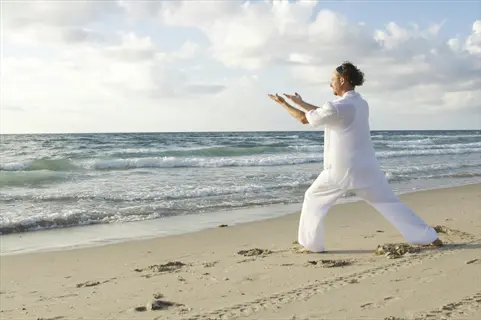
Qigong (8 Brocades)
- Energy cultivation system coordinating breath with gentle movements
- Eight ancient exercises target specific organ meridian systems
- Enhances lymphatic circulation through twisting motions
- Can be practiced seated or standing for accessibility
- Morning routines boost alertness without raising cortisol
- Supports immune function through diaphragmatic breathing
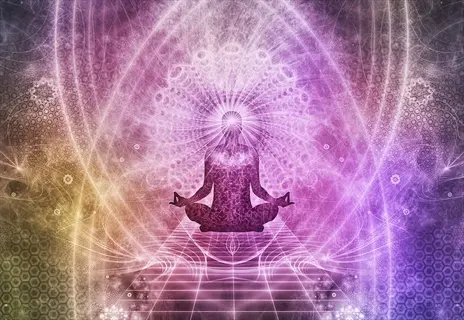
Mindfulness Meditation
- Awareness training method focusing attention on present-moment experiences
- Structured programs guide participants through systematic awareness development
- Anchors attention to breath rhythms, physical sensations, or environmental sounds
- Regular practice reduces reactivity to stressful stimuli effectively
- Beginner sessions start with five minutes building toward longer durations
- Non-judgmental observation methods cultivate emotional regulation capacities
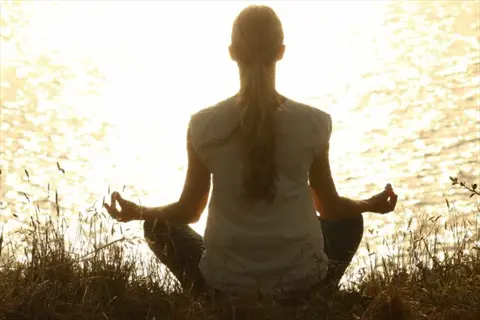
Transcendental Meditation
- Mantra-based technique promoting deep restful awareness states
- Uses personalized sounds repeated silently during practice sessions
- Standard protocol involves two twenty-minute sessions daily
- Promotes relaxation through increased alpha brain wave activity
- Formal instruction ensures correct technique application principles
- Supports healthy blood pressure maintenance through consistent practice

Guided Imagery
- Directed visualization technique activating sensory imagination faculties
- Uses descriptive language to create detailed mental scenarios
- Common applications include natural pain management approaches
- Triggers physiological responses through vivid mental simulation exercises
- Beginner-friendly scripts feature ten-minute nature-based themes
- Audio recordings offer accessible starting points for newcomers

Music Therapy
- Structured sound exposure technique regulating nervous system states
- Rhythmic patterns synchronize breathing and heart rate naturally
- Specific tempos induce relaxation responses effectively
- Personalized playlists support emotional processing and expression
- Live instruments create vibrational resonance throughout the body
- Combines effectively with movement practices for full engagement
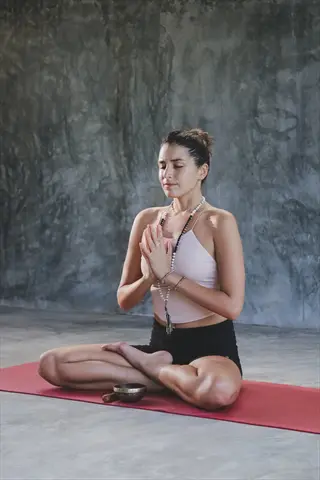
4-7-8 Breathwork
- Patterned breathing activating parasympathetic nervous system
- Inhale 4 seconds, hold 7 seconds, exhale 8 seconds
- Immediate anxiety reduction through vagus nerve stimulation
- Three cycles constitute one basic practice session
- Can be performed anywhere without equipment
- Counts can be adjusted for personal comfort

Forest Bathing
- Nature immersion practice engaging all sensory channels mindfully
- Involves slow walking while consciously observing woodland environments
- Natural compounds from trees support immune system function
- Extended exposure periods provide optimal benefit opportunities
- Focuses on sensory awareness rather than physical distance goals
- Combines effectively with mindful observation skill development

Biofeedback Yoga
- Technology-enhanced approach using physiological monitoring equipment
- Wearable devices display heart rate patterns during yoga postures
- Teaches self-regulation of stress responses through immediate feedback
- Combines traditional postures with modern data tracking methods
- Beginners learn to recognize physical stress signals consciously
- Specialized equipment enables precise physiological measurement

Aquatic Meditation
- Water-based mindfulness technique leveraging natural buoyancy properties
- Performed in warm water environments with partial immersion
- Reduces joint compression while enhancing body awareness significantly
- Water sounds create natural auditory focus points for concentration
- Temperature regulation supports profound relaxation states effectively
- Particularly suitable for individuals with mobility considerations

Tai Chi
- Chinese movement tradition featuring slow continuous weight-shifting motions
- Emphasizes balance improvement and coordination through deliberate stepping patterns
- Standard sequences take approximately six minutes for full completion
- Improves stability and reduces fall risk through controlled movements
- Incorporates fluid visualizations resembling air or water motion dynamics
- Comfortable flat-soled shoes provide adequate equipment for practice
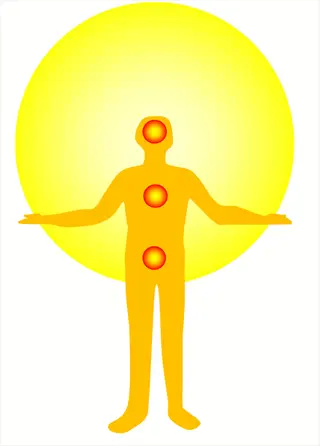
Qigong
- Energy cultivation method coordinating breath with gentle flowing movements
- Ancient exercise sequences target specific organ meridian systems holistically
- Twisting motions enhance lymphatic circulation throughout the body
- Adaptable for seated or standing positions ensuring accessibility
- Morning routines increase alertness without elevating stress hormones
- Diaphragmatic breathing patterns support healthy immune function maintenance
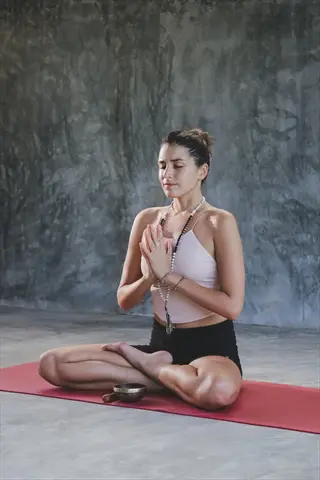
Breathwork Technique
- Patterned breathing method activating relaxation responses quickly
- Specific inhalation, retention, and exhalation ratios create effects
- Provides immediate anxiety reduction through nervous system regulation
- Basic sessions involve multiple cycles for cumulative benefits
- Portable practice requiring no special equipment or environment
- Personal adaptation allows adjustment for individual comfort levels
Measurable Benefits
Practices that integrate mind and body provide physical benefits you can measure. Yoga leads to improved flexibility relatively quickly through its various stretching practices. Tai Chi leads to improved balance, which reduces the risk of falls in the long term. Breathwork can lead to a rapid decrease in blood pressure during stressful situations. You can see the results of these changes in movement throughout the day and posture.
Mental boosts start quickly and continue to grow. For instance, meditation reduces anxiety after the first session. Practicing mindfulness consistently increases focus in approximately two months. Woods bathing instantly raises spirits through a connection with nature. Breathing is more relaxed, and the individuals are more present due to these practices.
Systemic benefits are benefits that affect the entire body. Qigong strengthens immune function over a period of several months by promoting the flow of lymphatic fluid. Music therapy regulates heart rhythms within each session. Aquatic meditation reduces chronic inflammation through the regular practice of being in water. These effects provide significant systemic benefits to enhance overall wellness.
Outcomes are a reflection of your consistency. Quick results, such as stress relief, happen immediately. Long-term results, such as pain management, typically take eight weeks. Use the catalogue to match practices to your goals. Small daily efforts result in measurable health changes.
Yoga Benefits
- Improves flexibility through consistent stretching routines
- Reduces lower back discomfort through targeted postures
- Builds balance control through weight distribution practice
- Strengthens core muscles through sustained posture holds
Meditation Results
- Decreases anxiety symptoms through breath regulation techniques
- Extends attention span through focused awareness practice
- Normalizes cortisol patterns through regular morning routines
- Improves emotional regulation during stressful situations
Tai Chi Effects
- Builds balance control through continuous weight shifting
- Reduces fall frequency through stability-focused movements
- Decreases joint stiffness through gentle motion sequences
- Improves posture alignment during movement practice
Breathwork Impact
- Lowers heart rate through specific breathing patterns
- Reduces acute anxiety symptoms during stressful events
- Improves respiratory efficiency through controlled techniques
- Balances autonomic nervous system response patterns
Guided Imagery Outcomes
- Reduces perceived pain intensity through mental focus techniques
- Improves performance through visualization rehearsal methods
- Decreases situational anxiety through calming scenarios
- Deepens relaxation during therapy sessions
Personalized Selection Guide
Select mind-body practices based on your primary health goals. To relieve stress, combine breathwork with restorative yoga. Chronic pain responds well to Tai Chi and guided imagery. Attention issues improve with mindfulness practices coupled with qigong. Sleep problems benefit from yoga nidra and specific breath patterns.
Your habitual constraints give rise to practical adaptations to your lifestyle. Office workers incorporate 5-minute stretches into a conscious breathing experience at their desks. Restricted movements include the seated Tai Chi or seated meditation. Busy schedules give micro seminars during the day. Chronic ailments are addressed with supported poses and restful soundscapes.
Accessibility changes allow everyone to partake. Chair yoga offers benefits without requiring you to stand. Audio guidance assists visually impaired practitioners. Vibrating timers help practitioners with hearing limitations. Water-based meditations reduce stress on joints. Start where you feel most comfortable and gradually increase your pace.
Fast solutions yield results. Taking three-minute breathing breaks can immediately reduce stress. Ten minutes of meditation in the morning increases concentration for the entire day. Short walks in nature increase immunity. The repetition of brief exercises is an alternative to long, infrequent ones.
Stress Relief Focus
- Recommended combination: Breathwork + Restorative Yoga
- Primary approaches: Activates relaxation responses
- Frequency: Ten-minute sessions twice daily
- Beginner entry: Start with four-seven-eight breathing technique
- Development path: Add fifteen-minute yoga nidra sessions
Chronic Pain Management
- Recommended combination: Tai Chi + Guided Imagery
- Primary approaches: Gentle movement with neural modulation
- Frequency: Twenty-minute sessions four times weekly
- Beginner entry: Seated tai chi movements
- Development path: Incorporate water-based meditation
Focus Enhancement
- Recommended combination: Mindfulness + Qigong
- Primary approaches: Concentration development techniques
- Frequency: Fifteen-minute morning sessions before work
- Beginner entry: Five-minute breath-focused meditation
- Development path: Add standing qigong sequences
Sleep Improvement
- Recommended combination: Yoga Nidra + Four-Seven-Eight Breathing
- Primary approaches: Sleep cycle regulation methods
- Frequency: Twenty-minute sessions before bedtime
- Beginner entry: Guided sleep meditation recordings
- Development path: Create personalized bedtime sequence
Immune Support
- Recommended combination: Qigong + Forest Bathing
- Primary approaches: Lymphatic stimulation techniques
- Frequency: Thirty-minute sessions three times weekly
- Beginner entry: Indoor qigong with nature imagery
- Development path: Combine with weekly park visits
Safety & Integration
Safety considerations vary according to the nature of the medical condition. Pregnancy requires that hot yoga and breath holding not occur. Hypertension means avoiding inversions and intense breath practices. Orthopedic injuries mean the need for props to help, and the avoidance of certain poses. Mental illnesses benefit from working with knowledgeable teachers. Sensory deficits require proper environmental modifications, such as using tactile hints.
Certain populations require specific adaptations. Older adults utilize chair support while practicing qigong. Workers in an office should take a break to move every hour. Athletes should check their heart rate while performing flows. People with chronic pain should avoid weight-bearing poses during times of flare-ups. Always start gently and build strength over time.
Combine conventional care with integrative practices by sharing activity logs with the cardiologist, outlining meditation plans with the therapist, correlating yoga with physical therapy exercises, and correlating breathing exercises with exposure therapy. Additionally, discuss fatigue levels during treatments with oncologists.
Communicate with your health care providers. Bring descriptions of the practice to your appointments. Make a note of changes in symptoms before and after treatments. Discuss any possible treatment interactions. Ask about the type of exercise you could increase or decrease. Keep a journal to record pain scores and stress levels.
Pregnancy Precautions
- Avoid hot yoga and intense core compression postures
- Modify positions after first three months to prevent supine hypotension
- Prefer gentle prenatal yoga with certified instructors
- Discontinue breath retention techniques immediately
Hypertension Management
- Skip inverted postures and extreme breath holding
- Monitor blood pressure during initial sessions carefully
- Choose seated or supine positions for meditation
- Avoid strenuous qigong in uncontrolled cases
Orthopedic Considerations
- Modify poses during acute joint inflammation phases
- Use props for spinal conditions
- Avoid weight-bearing positions with recent fractures
- Consult physiotherapists for arthritis adaptations
Mental Health Conditions
- Screen meditation teachers for trauma-informed training
- Avoid extended retreats with PTSD or psychosis history
- Prefer guided over silent practices with severe anxiety
- Monitor dissociation symptoms during visualization
Sensory Limitations
- Provide tactile cues for visually impaired participants
- Offer vibration-based timing for hearing limitations
- Ensure clear pathways for mobility device users
- Adjust lighting for photosensitivity conditions
5 Common Myths
Many contend that considerable physical flexibility is required before beginning the effective practice of mind body activities
These methods give flexible modifications for all degrees of fitness including seated variations and simpler movements. Gentle breathing exercises which do not demand any special abilities can be given to beginners. All that is needed is the willingness to take part. Flexibility is not the important requisite. Certified instructors there to make personal adjustments in the way the exercises can be accomplished make it possible for any and all to obtain the benefit, regardless of what their executive abilities may be now.
Many people mistakenly think that meditation means eliminating all thoughts from the mind
These methods emphasize watching thoughts objectively, instead. The process means noticing the activity of the mind and gently redirecting the attention back to the breath or sensations in the body. This non-reactive awareness develops clarity over time. With regular practice, happens the recognition of mental habituations without becoming entrapped by them.
Some claim mind-body techniques can take the place of conventional medical treatments for health conditions
These practices serve as supportive approaches that complement medical treatments rather than acting as alternatives. They enhance overall wellbeing and may improve outcomes but should never replace professional care. Always consult providers about integrating these methods alongside prescribed treatments under proper guidance.
People often assume meaningful benefits require extended daily sessions impractical for busy schedules
Even brief, consistent practices yield measurable benefits. Five-minute breathing sessions provide noticeable stress reduction when performed regularly. Short activities integrated throughout the day accumulate advantages comparable to longer sessions. Consistency proves more impactful than extended single practices.
There exists a belief that these practices demand adherence to specific spiritual frameworks or beliefs
Modern approaches offer completely secular, science-based methodologies focused on physiological benefits. While traditions have historical roots, contemporary adaptations remove religious elements while retaining therapeutic value. Participants engage purely for health outcomes without spiritual prerequisites. Programs concentrate exclusively on measurable wellbeing improvements accessible to all.
Conclusion
Mind-body practices are effective because they are tailored to your specific lifestyle. Personalization makes them accessible whether you have 5 minutes or 50. Chair yoga supports limited mobility. Mini meditations work for busy schedules. You select those that suit your needs. Research shows that small efforts repeated consistently will achieve long-lasting change.
Do you know about neuroplasticity? Your brain rewires itself through repeated practices! Daily breathwork produces parasympathetic activation. Gentle exercise produces better lymphatic flow. These biological systems function optimally when they are utilized consistently. Frequent, short sessions are more effective than infrequent, long ones.
Begin with a single simple practice today. This could include four-count breathing during quiet time, seated stretches while on calls, outdoor strolls, noting the sounds of nature, and tracking your feelings at the end of the week. The journey toward holistic wellness starts with this first step!
External Sources
Frequently Asked Questions
What are mind-body practices?
Mind-body practices integrate physical techniques with mental focus to enhance holistic wellness. These evidence-based approaches include yoga, meditation, breathwork, and tai chi. They work by connecting conscious awareness with physiological processes to improve stress resilience, emotional balance, and physical health through systematic training.
How do mind-body techniques benefit physical health?
These techniques improve physical health through multiple mechanisms:
- Reducing stress hormones like cortisol
- Enhancing parasympathetic nervous system activation
- Improving cardiovascular function and circulation
- Increasing joint mobility and muscular flexibility
- Boosting immune system responsiveness
Can mind-body practices replace medical treatments?
Mind-body practices serve as complementary approaches that support conventional medicine rather than replacing it. They enhance treatment outcomes for conditions like chronic pain and hypertension but should always be integrated with professional medical guidance. Never discontinue prescribed treatments without consulting healthcare providers.
What is mind-body medicine?
Mind-body medicine focuses on the interconnection between mental states and physical health. It employs techniques that leverage neuroplasticity and psychophysiological principles to promote self-healing. This evidence-based field combines traditional wisdom with modern science to address wellness holistically.
How quickly can I expect results?
Benefits emerge at different timelines based on consistency and individual factors:
- Immediate stress reduction from single breathwork sessions
- Sleep improvements within 4-5 weeks of regular practice
- Cognitive enhancements after 6-8 weeks
- Significant pain reduction typically requiring 8+ weeks
Do I need special equipment or fitness levels?
Mind-body practices are accessible regardless of fitness levels. Most techniques require no equipment beyond comfortable clothing. Numerous modifications exist for different abilities, including chair-based variations for limited mobility and beginner-friendly meditation approaches requiring only a quiet space.
What's an example mind-body technique?
The 4-7-8 breathing technique demonstrates core principles: inhale for 4 seconds, hold for 7, exhale for 8. This pattern activates the parasympathetic nervous system, reducing anxiety and lowering heart rate within minutes. It requires no equipment and can be practiced anywhere.
Are these practices associated with religion?
Modern mind-body practices are secular and science-based. While some techniques originate from spiritual traditions, contemporary adaptations focus exclusively on physiological benefits. Participants engage purely for health outcomes without any religious requirements or belief systems.
How do I choose the right practice?
Selection depends on personal goals and lifestyle:
- Stress relief: Breathwork + restorative yoga
- Chronic pain: Tai chi + guided imagery
- Focus enhancement: Mindfulness + qigong
- Busy schedules: Micro-meditation sessions
- Physical limitations: Chair-based adaptations
What safety precautions should I consider?
Key safety measures include:
- Consulting doctors for chronic conditions
- Avoiding inversions with hypertension
- Modifying poses during pregnancy
- Using trauma-informed guides for mental health concerns
- Adjusting practices for sensory limitations

